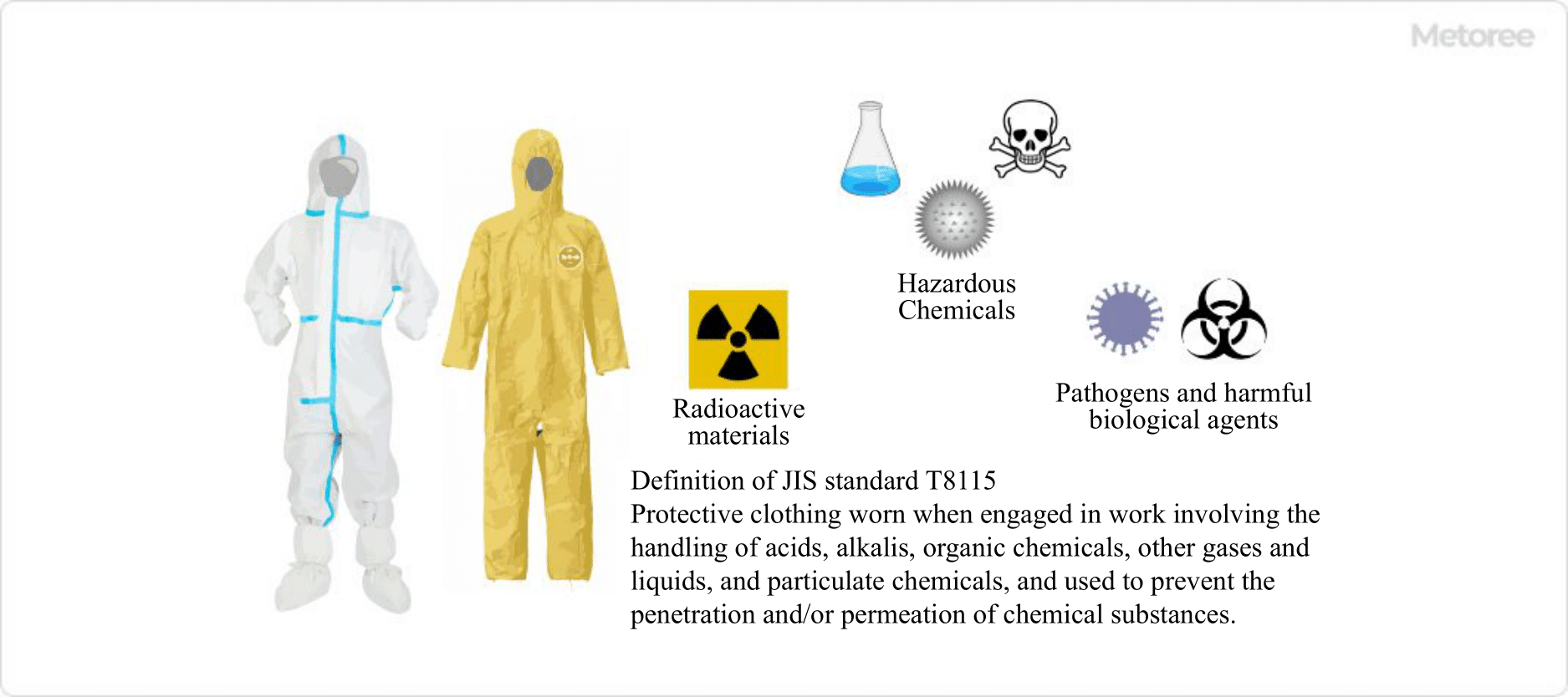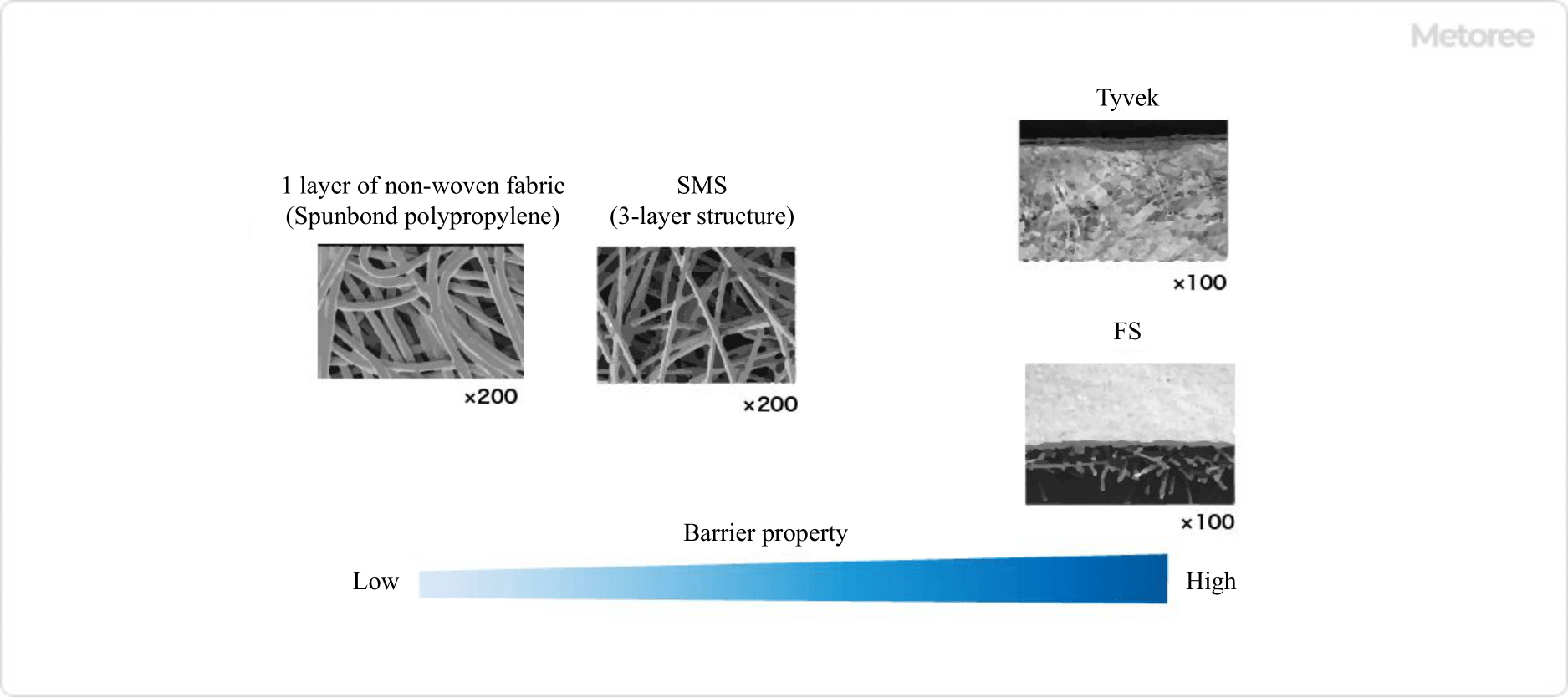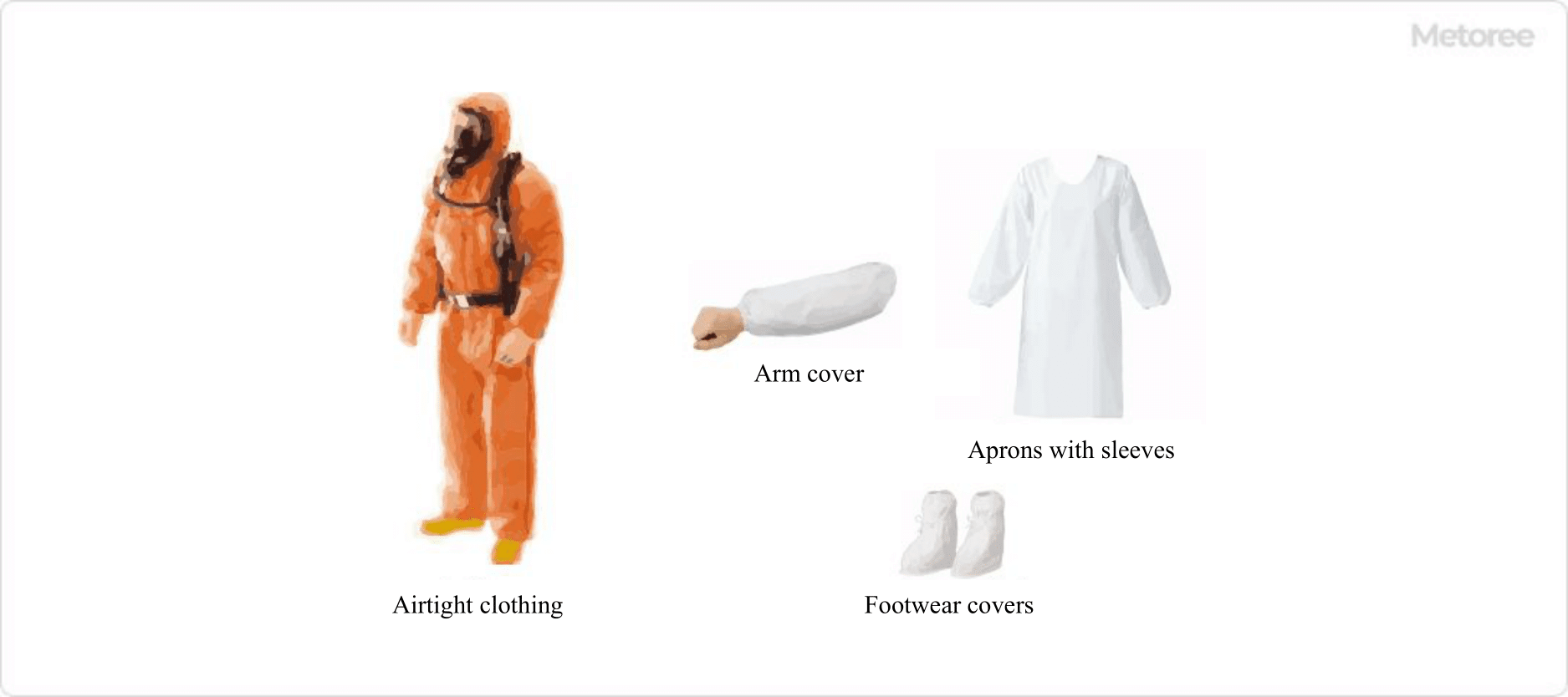What Is Chemical Protective Clothing?

Figure 1. Overview of protective clothing
Chemical protective clothing is protective clothing worn to ensure the safety of workers and protect their health when handling hazardous chemical substances.
Protective clothing should be worn when engaged in work involving the handling of acids, alkalis, organic chemicals, and other gaseous, liquid, and particulate chemical substances (hereinafter referred to as chemical substances).
Unlike ordinary clothing, the surface gaps are very small and smooth. The materials used also have extremely low permeability to organic solvents. Although originally manufactured to protect against chemical substances, it is also used to protect against biological and radioactive materials due to its high particulate protection effectiveness.
Uses of Chemical Protective Clothing
The main uses of chemical protective clothing are in workplaces where chemical substances are handled, in the event of a disaster caused by nuclear, biological, or chemical substances, and in workplaces where hazardous substances must be disposed of.
Examples of past large-scale disasters include the following:
- Investigating chemical attacks
- Asbestos treatment work
- Dioxin and PCB treatment work
- Disinfection and dismantling of chicken coops contaminated with avian influenza
Chemical protective clothing is usually used to protect against harmful substances to the human body, but it can also be used to protect workers from contamination.
Examples include metalworking industries where grease and soot stains are common, and painting and printing industries where paint and ink are used.
Other applications include clean rooms in regenerative medicine research, where protective clothing is used to protect cells and drug products from bacteria that may be attached to the worker’s body.
Principle of Chemical Protective Clothing

Figure 2. Various materials used in protective clothing
Chemical protective clothing is made of a variety of textile materials, including non-woven fabrics, SMS, FS, and Tyvek®. It is very important to wear protective clothing of the appropriate standard for the intended event.
1. One-Layer Non-Woven Fabric Type
This product is made of spunbond polypropylene. The single-layer structure of spunbonded polypropylene fabrics allows for a large number of voids between fibers. Although the barrier property is somewhat inferior, it is inexpensive and suitable when cost is important. It is sufficient for light soiling.
2. SMS
SMS polypropylene is used for this product. It has a three-layer structure consisting of spunbonded, meltblown, and spunbonded materials. It is characterized by strong abrasion resistance and a cloth-like feel. Although relatively inexpensive, it is resistant to abrasion and light soiling, and has a high barrier effect against dust and droplets.
3. FS
This product uses a film laminate. It has a structure in which a thin film material is attached to the surface of polypropylene, spun-bonded nonwoven fabric, or the like. It has high barrier properties against dirt and dust, and excellent waterproofing properties, making it suitable for work in watery areas.
4. Tyvek
Tyvek is a special material unique to DuPont, consisting of continuous microfibers of high-density polyethylene (0.5~10 microns) bonded together by heat and pressure, which provides excellent barrier properties against particles of 1 micron or less. Two-layer protective clothing with polymer coating is also available.
Types of Chemical Protective Clothing

Figure 3. Full Body Chemical Protective Clothing and Partial Chemical Protective Clothing
There are two types of chemical protective clothing: full body chemical protective clothing, which protects the entire body or a large part of the body, and partial body chemical protective clothing, which protects a part of the body.
Full-body chemical protective clothing can range from airtight suits with self-contained breathing apparatuses inside, to full-body suits that are sealed against liquids and chemical mists.
Partial chemical protective clothing includes aprons, footwear covers, lab coats, arm covers, and smogs.